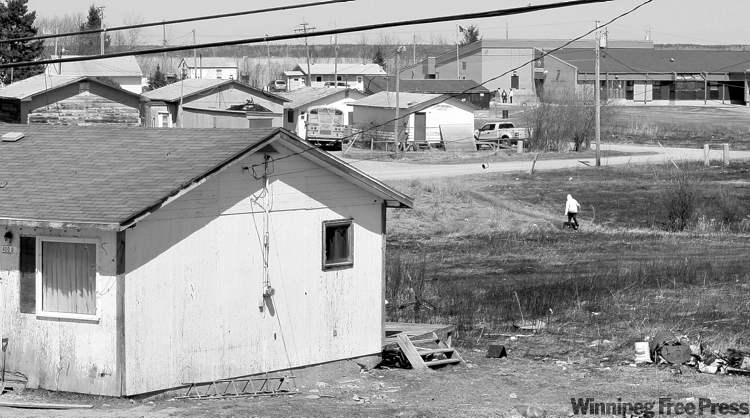Dutch device may fix water problems
Pilot project tests units that turn lake water into drinkable supply
Advertisement
Read this article for free:
or
Already have an account? Log in here »
To continue reading, please subscribe:
Monthly Digital Subscription
$0 for the first 4 weeks*
- Enjoy unlimited reading on winnipegfreepress.com
- Read the E-Edition, our digital replica newspaper
- Access News Break, our award-winning app
- Play interactive puzzles
*No charge for 4 weeks then price increases to the regular rate of $19.00 plus GST every four weeks. Offer available to new and qualified returning subscribers only. Cancel any time.
Monthly Digital Subscription
$4.75/week*
- Enjoy unlimited reading on winnipegfreepress.com
- Read the E-Edition, our digital replica newspaper
- Access News Break, our award-winning app
- Play interactive puzzles
*Billed as $19 plus GST every four weeks. Cancel any time.
To continue reading, please subscribe:
Add Free Press access to your Brandon Sun subscription for only an additional
$1 for the first 4 weeks*
*Your next subscription payment will increase by $1.00 and you will be charged $16.99 plus GST for four weeks. After four weeks, your payment will increase to $23.99 plus GST every four weeks.
Read unlimited articles for free today:
or
Already have an account? Log in here »
Hey there, time traveller!
This article was published 05/11/2011 (5150 days ago), so information in it may no longer be current.
A new water-treatment system the size of a big fridge could be the answer to First Nations’ water woes.
The Manitoba government just flipped the switch last week on a pilot project in Seymourville near Hollow Water First Nation on the banks of Lake Winnipeg. The province is testing a Dutch-made water-treatment system that uses new membrane technology instead of chemicals to treat drinking water. It’s dramatically cheaper than traditional plants, requires far less maintenance and can be installed in a matter of hours. The technology is already commonly used in places like Haiti and Panama and even near Thunder Bay.
Consultant Tom Klos, who pitched the project to the province over the summer, says it could also easily be used in First Nations where thousands of people don’t have indoor plumbing and where 16 aging water-treatment plants were recently rated a “high risk” to human health.

“We can solve their problems right away,” said Klos, who first learned about the treatment system while working overseas as part of the Dutch diplomatic corps. “When you see this machine, you think, ‘Is that all?’ Yup, that’s all.”
The Manitoba government spent $28,000 on a test unit for Seymourville, one of 49 communities governed by the province’s Aboriginal and Northern Affairs Department. Those are small hamlets located next to First Nations reserves that are provincial, not federal, jurisdiction.
Seymourville is one of 15 ANA hamlets slated to get a new water-treatment plant over the next six or seven years because the plants are decrepit or too small to serve growing populations. In advance of that, the province is testing the small treatment system made by Norit that sends raw water, in this case from Lake Winnipeg, through thousands of long tubes that look like drinking straws. Those tubes force the water through a filtering membrane, which removes impurities. The system also includes a chlorination step, UV disinfection and carbon filtration for good measure. If the hamlet grows, it’s easy to add more capacity, says Klos. But the $28,000 unit in Seymourville is already big enough to provide treated water to the town’s 150 homes.
The province is cautiously optimistic about the Norit system, but isn’t hooking it up to homes just yet. The new system will be tested all winter and into the summer to make sure it produces reliably safe drinking water.
“It could be used in other communities, but until we know how this pilot will work, we’re not making any commitments,” said Freda Albert, executive director for the local government division of Aboriginal and Northern Affairs.
But she said if the system works, the province could likely upgrade the water-treatment plants in ANA communities twice as fast.
In most cases, tenders for new treatment plants for ANA hamlets come in between $2 million and $4 million, she said. And the same technology could be imported onto reserves, which are federal jurisdiction.
Albert said the province, Klos and other Norit experts are hosting an open house in December in Seymourville to talk with interested First Nations about the technology.

Manitoba’s First Nations, including Hollow Water, are mired in a water and sewage crisis.
In Island Lake in the province’s northeast corner, roughly 800 homes in four separate reserves have no indoor plumbing.
And a national assessment released in July that looked at every water and sewer plant on reserves in Canada identified 16 water plants and six sewage plants in Manitoba that required immediate attention. It will cost $82 million to bring Manitoba’s on-reserve plants up to snuff, and that doesn’t include extending pipes and installing toilets and taps in homes that have no indoor plumbing.
maryagnes.welch@freepress.mb.ca
History
Updated on Saturday, November 5, 2011 1:01 PM CDT: adds fact boox, link to series


